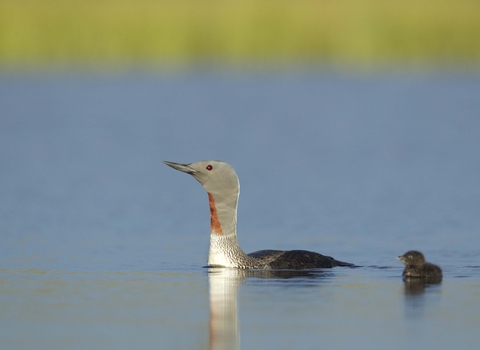
©Mark Hamblin/2020VISION
Red-throated diver
The red-throated diver lives up to its name - the distinctive red patch on its throat heralds the breeding season. In summer, it nests in Scotland, but look out for it around the UK's coast during winter.
Scientific name
Gavia stellataWhen to see
January to DecemberSpecies information
Category
Statistics
Length: 61 cmWingspan: 1.1m
Weight: 1.6kg
Average lifespan: 9 years
Classified in the UK as Green under the Birds of Conservation Concern 5: the Red List for Birds (2021). Protected in the UK under the Wildlife and Countryside Act, 1981.
